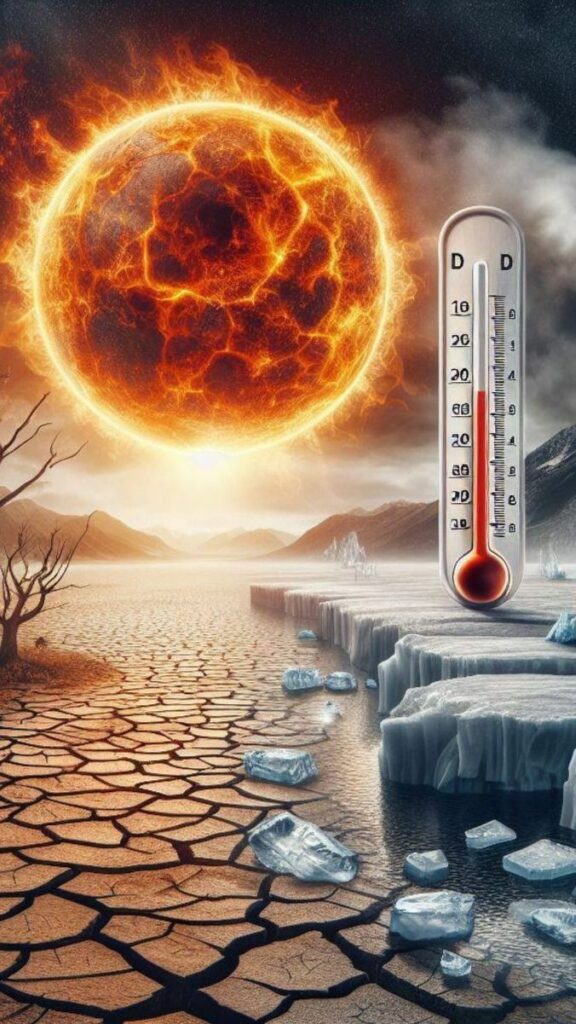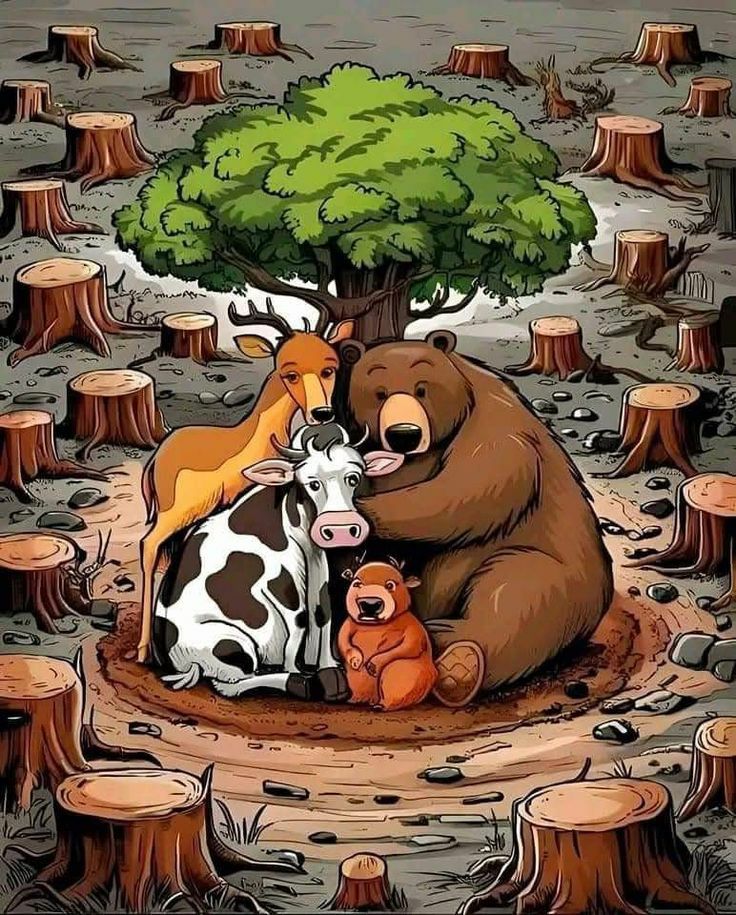Global warming is one of the most critical environmental issues of our time. It refers to the gradual increase in the Earth’s average surface temperature due to the excessive release of greenhouse gases into the atmosphere. These gases trap heat from the sun, causing a rise in global temperatures. Over the past few decades, scientists and environmentalists have raised serious concerns about the adverse effects of global warming on nature and human life. It is not just a future threat but a present reality that needs urgent action.

Causes of Global Warming
The primary cause of global warming is human activity. Although natural processes such as volcanic eruptions and solar variations contribute slightly, the significant rise in temperature over the last century is largely due to:
1. Burning of Fossil Fuels: The use of coal, oil, and natural gas for electricity, heating, and transportation releases enormous amounts of carbon dioxide (CO₂), the chief greenhouse gas.
2. Deforestation: Forests act as carbon sinks. Cutting down trees reduces the planet’s ability to absorb CO₂, worsening global warming.
3. Industrial Activities: Factories and power plants release not only CO₂ but also methane (CH₄) and nitrous oxide (N₂O), which have even higher warming potential.
4. Agricultural Practices: Use of chemical fertilizers, rice cultivation, and livestock farming emit greenhouse gases such as methane and nitrous oxide.
5. Waste Mismanagement: Landfills produce methane gas due to decomposition of organic waste.
6. Overpopulation and Urbanization: More people mean more cars, homes, industries, and hence more emissions.

Greenhouse Effect and Its Role
Global warming is not just about hotter summers; it has wide-ranging and severe effects:
1. Rising Sea Levels: Melting polar ice caps and glaciers contribute to sea level rise, threatening low-lying areas and islands.
2. Extreme Weather Events: More frequent and intense heatwaves, storms, floods, and droughts have been linked to global warming.
3. Threat to Biodiversity: Species are losing their habitats and facing extinction. Coral reefs, for instance, are bleaching due to warmer oceans.
4. Impact on Agriculture: Irregular rainfall, droughts, and extreme temperatures affect crop yield, leading to food insecurity.
5. Health Hazards: Increase in heat-related illnesses, spread of vector-borne diseases like malaria and dengue, and poor air quality affect human health.
6. Ocean Acidification: CO₂ is being absorbed by oceans, changing their pH levels and harming marine life.
Global Initiatives and Agreements
To combat global warming, countries across the world have come together to sign environmental agreements such as:
Kyoto Protocol (1997): The first international treaty that committed countries to reduce emissions.
Paris Agreement (2015): A landmark deal where 196 countries pledged to limit global temperature rise to well below 2°C and pursue efforts to limit it to 1.5°C.
United Nations Climate Change Conferences (COP Summits): Annual meetings to review progress and negotiate further climate actions.
India’s Role and Efforts
India, being a developing country, faces a dual challenge—growth and sustainability. However, it has taken several steps:
National Action Plan on Climate Change (NAPCC): Includes missions on solar energy, energy efficiency, and sustainable agriculture.
International Solar Alliance (ISA): Co-founded by India to promote solar energy globally.
Panchamrit Goals: Announced by India at COP26 to achieve net-zero carbon emissions by 2070.
Promotion of Electric Vehicles: India is encouraging cleaner transportation.
What Can Individuals Do?
The fight against global warming cannot be won without the participation of common people. Simple steps can bring big changes:
Use public transport, cycle, or walk to reduce carbon emissions.
Turn off electrical appliances when not in use.
Plant trees and protect green spaces.
Recycle, reduce, and reuse materials.
Support sustainable brands and avoid overconsumption.
Educate others about climate change.
Conclusion
Global warming is a reality we can no longer ignore. Its effects are being felt all around us—from rising seas to extreme weather patterns. If not addressed urgently, it could lead to irreversible damage to our planet. The time to act is now. Governments, industries, communities, and individuals must all work together to reduce emissions and adopt sustainable practices. Only with collective action can we safeguard the Earth for future generations.



